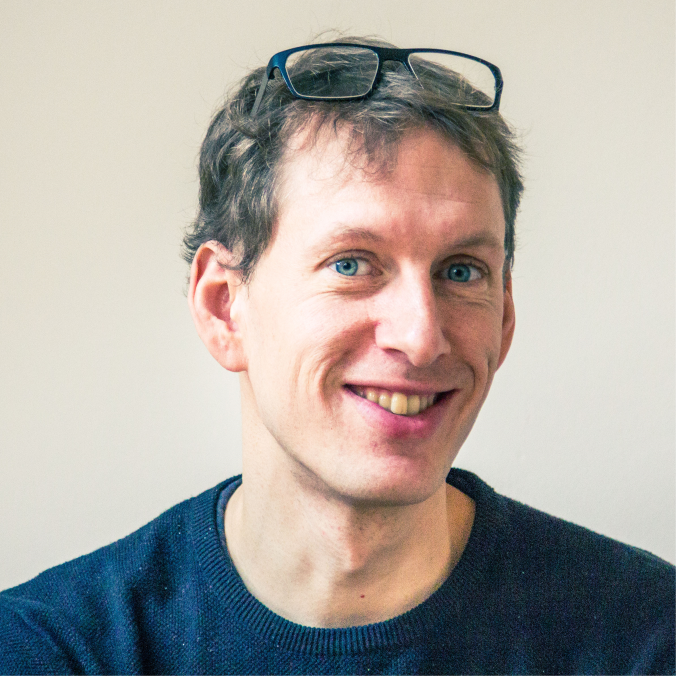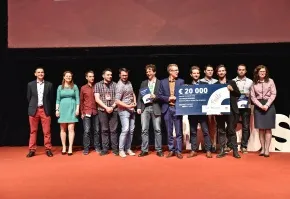 28.08.2017
28.08.2017
Radical innovation and uncertainty: a guide for founders
There are two ways of thinking when creating, and you need both to be radically innovative. It is painful, but there are some mental models that makes it easier. Hampus Jacobsson's advice for founders.
The deductive and the inductive
I think a person can create in two different ways; deductively and inductively. If you create products deductively you copy, project, or add a feature. You go from one truth to another. Incremental innovation is what the theory calls it. That is where the Lean Startup methods are best.
Inductive methods are harder to explain. They feel like eureka moments but are the sum of many impressions over time and a lot of work. But building a product with a purely inductive mindset will, at best, lead to art. No more.
How radical innovation is done
Radical innovation requires both mindsets. By believing you are seeing the future clearly, but being humble in understanding that you are merely feeling. You will need help to make that tangible. And then iterating on that. Otherwise, you are just drifting in frustration. The sole ‘visionary founder’ is most often a very lonely and misunderstood person. You need to combine the inductive process with a deductive.
Creating an entirely new product feels like the blind leading the deaf. The inductive and the deductive both are totally lost in their unique way. By cooperating and fighting through the communication issues, they can create. In conflicts, you need to address the whys, assumptions, and principles, which lead you forward. Figure out how to fight in a constructive manner ¹ with your co-founder.
Don’t give up, embrace it. The obstacle is the way if you want to do disruptive innovation. And that world is not like other².
Creating a patchwork of informed guesses
There are many methods of getting closer. All these are just triangulation, and none of them will be answers. They will give you more ‘feeling’ and conviction, but no customer will tell you what you should be building next.
“When he set out to invent the light bulb, Edison was not tinkering with candles.”
The first one is creating prototypes on a deadline. You set off a day, or even a week, and just build a prototype – preferably for an open-minded customer or an imagined one. It is important to focus on this task and set everything else aside as well as constraining the time, so you don’t question things or even worse try to make it perfect. Great is the enemy of the good. And remember, you are not after anything you can build on, just something to give you insight.
The second one is to interview users to truly get under the skin. Let them walk you through an event where you think your product could be useful, without leading them at all. You can even start with “what is a day like.” Drill down when they are on subjects you care about. Ask why things are as they are. Ask what the consequences of problems are. Ask how they would solve the problem instead. Don’t ask them about solutions. I can’t stress this enough; don’t talk about solutions, you are not a salesperson, you are an anthropologist.
The third one is imagining a deity trying to solve the problem. What would education with VR look like if Apple did it? How would Google implement Dun & Bradstreet? How would a bike from Tesla look like?
The fourth one is working on analogy or vision. I loved the one Google used many years; What business models would work in the (infinite) library of Alexandria? How would education be in multiplayer co-op mode? How can you scale Tony Robbins so everyone gets a personal development coach?
Again, these don’t provide answers but a playing field for your minds to make your idea more tangible.
Predict panic, not clear progress
The feeling of panic, imbalance, confusion, and most of all frustration isn’t unnatural or that you are not progressing. It is a signal that you are working. It is painful going through the cognitive dissonance of the two modes. Luck favors the gritty.
The first product is not the definitive one either. It will need to evolve into a platform or other unique defendabilities, but for now, it is just an experiment gathering data for you.
Startups are different to most things. They are ventures into the unknown, where you have to combine the mind of an artist with one of an engineer. Dreams with Details. Imagination with Implementation. Future with Now.
Innovation is more an art and not a craft. It is the cooperation of two processes that don’t seem to blend well. Don’t worry if you find it hard and that there is little prescription that works.
1 https://hajak.se/why-founders-need-tofight-or-lose-it-all-bdf66a91776c
2 https://hajak.se/why-deep-tech-startupsshouldnt-monetize-and-what-they-shoulddo-instead-ac710f59c815

One of the Nordics most influential angel investors with over 60 investments and the co-founder of the NordicMakers angel group. Originally a computer science engineer who founded a deep tech company finally acquired by Blackberry for $150m.
Tags:
See also:
LATEST NEWS
Od czego zależy sukces wdrożeń AI? - polskie i amerykańskie trendy w branży tech 24.10.2025
Five highlights from EU Space Days 2025 13.06.2025
🤝 Networking i zabawa na Infoshare 2025 30.04.2025
⭐ Spotkaj liderów innowacji | Keynote Speakers 23.04.2025
🎸 Zagraj na Great Networking Party | Call for Bands 16.04.2025
🏆 Gdańsk Startup Award – Twoja Szansa na Sukces! 09.04.2025



